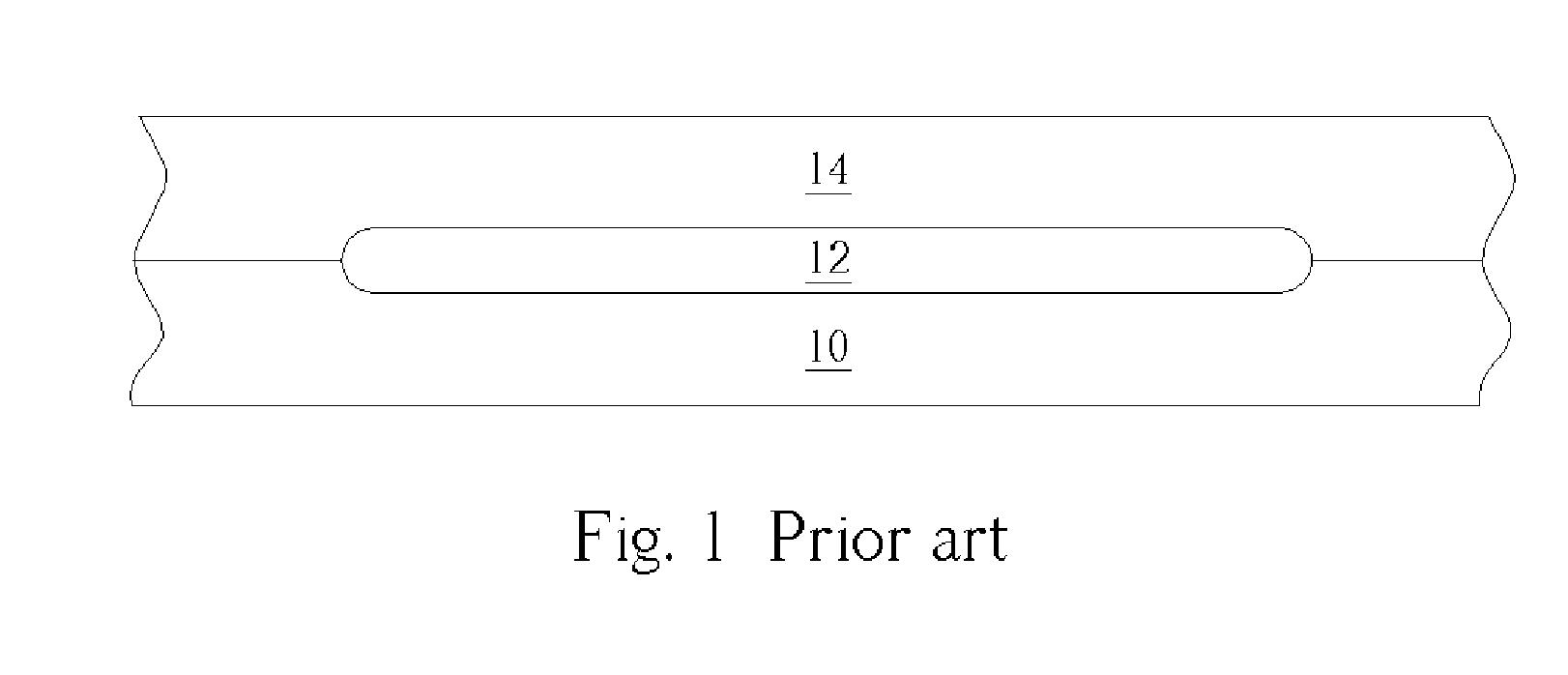Method of fabricating a bipolar junction transistor
a bipolar junction transistor and transistor technology, applied in the field of bipolar junction transistor fabrication, can solve the problems of increasing the complexity of the total processing steps of the bjt, device damage, and device damage, so as to reduce the resistance of the collector, reduce the production cost, and simplify the processing steps
- Summary
- Abstract
- Description
- Claims
- Application Information
AI Technical Summary
Benefits of technology
Problems solved by technology
Method used
Image
Examples
first embodiment
[0019] Referring to FIGS. 7-14, FIGS. 7-14 are schematic diagrams of a method of fabricating a BJT according to the present invention. Since the present method of fabricating the BJT can be optionally combined with processing steps of a CMOS transistor and the processing steps of the CMOS transistor are already well known by the current industry, FIGS. 7-14 are focused on illustrating the processing steps of the BJT only.
[0020] As shown in FIG. 7, a substrate 40 with a plurality of isolation structures 42 for defining at least an active area A on the substrate 40 is provided. The isolation structures 42 can be shallow trench isolation (STI) or field oxide layers. The substrate 40 can be a P-type silicon substrate. Then, an ion implantation process is performed, for example a doping process for forming a source / drain of an NMOS of a CMOS transistor on the substrate 40 is used together with a thermal treatment to form an N-type doping region 44 within the active area A. The N-type dop...
second embodiment
[0027] Referring to FIGS. 16-24, FIGS. 16-24 are schematic diagrams of a method of fabricating a BJT according to the present invention. Since the present method of fabricating the BJT can be optionally combined with processing steps of a CMOS transistor and the processing steps of the CMOS transistor are already well known by the current industry, FIGS. 16-24 are focused on illustrating the processing steps of the BJT only.
[0028] As shown in FIG. 16, a substrate 60 with a plurality of isolation structures 62 for defining at least an active area A on the substrate 60 is provided. The isolation structures 62 can be shallow trench isolation or field oxide layers. The substrate 60 can be a P-type silicon substrate. Then, an ion implantation process is performed, for example a doping process for forming a source / drain of an NMOS of a CMOS transistor on the substrate 60 is used together with a thermal treatment to form an N-type doping region 64 within the active area A. The N-type dopin...
PUM
 Login to View More
Login to View More Abstract
Description
Claims
Application Information
 Login to View More
Login to View More - R&D
- Intellectual Property
- Life Sciences
- Materials
- Tech Scout
- Unparalleled Data Quality
- Higher Quality Content
- 60% Fewer Hallucinations
Browse by: Latest US Patents, China's latest patents, Technical Efficacy Thesaurus, Application Domain, Technology Topic, Popular Technical Reports.
© 2025 PatSnap. All rights reserved.Legal|Privacy policy|Modern Slavery Act Transparency Statement|Sitemap|About US| Contact US: help@patsnap.com



